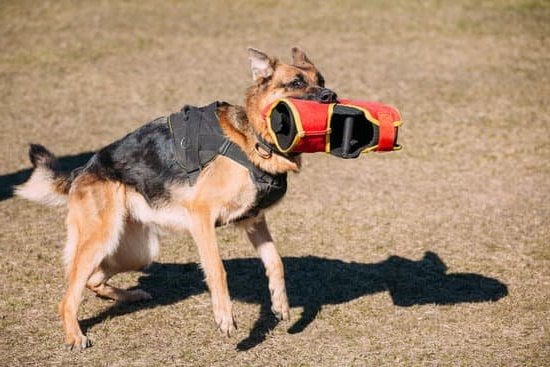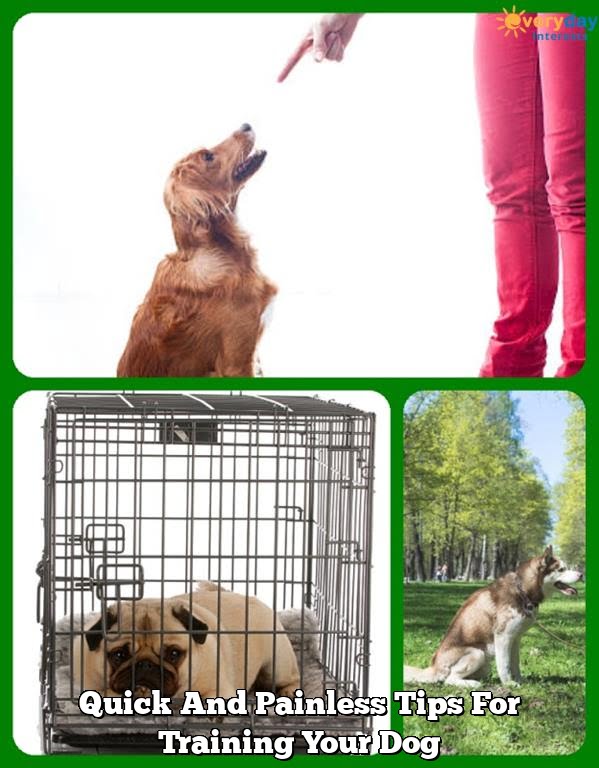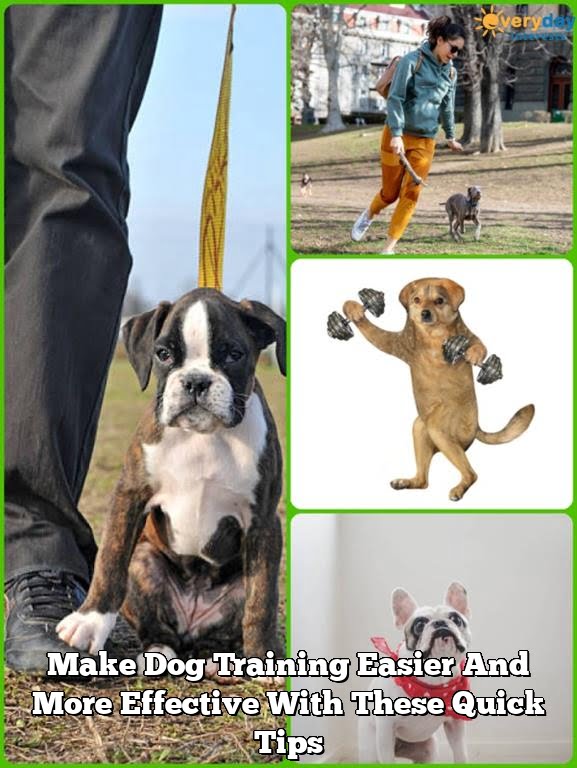Potty training is a fundamental aspect of owning a dog, ensuring they can live harmoniously in your home. Learning how to potty train a dog quick is crucial for both the pet’s well-being and maintaining a clean living environment. By following some essential guidelines and being consistent, you can effectively teach your furry friend where to do their business.
Understanding your dog’s behavior is key to successful potty training. Recognizing the signs that your dog needs to go out will help you anticipate their needs and prevent accidents inside the house. Setting up a proper potty training schedule and sticking to it will create a routine that your dog can rely on, making the learning process more manageable for them.
In this article, we will dive into various techniques such as crate training, positive reinforcement, supervision, and dealing with accidents. By implementing these strategies with patience and persistence, you can accelerate the potty training process for your dog. Stay motivated throughout this journey as we explore practical tips to help you achieve success in potty training your beloved companion.
Understanding Your Dog’s Behavior
Observing Your Dog’s Behavior
One of the key aspects of successfully potty training your dog quickly is understanding their behavior and recognizing the signs that they need to go. Dogs often exhibit certain behaviors or cues that indicate they need to relieve themselves. These can include sniffing or circling, pacing, whining, or suddenly becoming restless. By observing your dog closely and learning to recognize these signals, you can anticipate when they need to go and take them outside in time.
Establishing a Communication System
Another important aspect of understanding your dog’s behavior in relation to potty training is establishing a communication system with them. This could involve using a specific word or command when taking them outside to do their business.
By associating this word with the act of going potty, your dog will eventually learn to understand what is expected of them when you give this command. Consistent communication can help streamline the potty training process and make it quicker for both you and your furry friend.
Utilizing Training Aids
In addition to observing behavior and establishing communication, you can also use training aids to help speed up the potty training process for your dog. Consider using pee pads or artificial grass indoors if you live in an apartment or have limited outdoor space.
These aids can provide a designated area for your dog to go potty while still reinforcing good habits. Remember to gradually transition from indoor pads to outdoor spaces as your dog gets better at holding their bladder and understanding where they should do their business.
Setting Up a Potty Training Schedule
Once you have identified your dog’s potty patterns, make sure to take them outside frequently during those times. This will help prevent accidents indoors and reinforce the behavior of going potty outside. Be patient and give your dog enough time to do their business.
Use verbal cues such as “go potty” or “toilet time” to associate specific words with the action of elimination. When your dog successfully goes potty outside according to the schedule, provide plenty of praise and rewards to positively reinforce that behavior.
Creating a visual chart or using reminders on your phone can be helpful in maintaining consistency with the potty training schedule. It is essential to stick to the routine even on weekends or busy days when your schedule might be disrupted. Consistency helps dogs learn faster and reduces confusion about where it is appropriate to go potty.
Remember that accidents may happen during the training process, but do not punish your dog for mistakes. Instead, clean up any accidents promptly without scolding them as this can set back the training progress.
| Tips for Setting Up a Potty Training Schedule | Benefits |
|---|---|
| Observe your dog’s habits and patterns | Helps prevent indoor accidents |
| Take them outside frequently during key times | Reinforces proper elimination behavior |
| Use verbal cues for association | Creates communication between you and your pet |
Crate Training
When using a crate for potty training purposes, it’s essential to ensure that the crate is appropriately sized for your dog. Your dog should have enough room to stand up, turn around, and lie down comfortably in the crate. If the crate is too large, your dog may use one end for sleeping and the other end for eliminating, defeating the purpose of using the crate for potty training.
During the initial stages of potty training, it’s important to gradually introduce your dog to the crate and associate it with positive experiences. You can do this by feeding your dog meals inside the crate or providing toys or treats that they enjoy while they are in the crate. By creating positive associations with the crate, you can help make it a comfortable and inviting space for your dog.
Remember to never use the crate as a form of punishment; it should always be viewed as a safe haven for your furry friend. By incorporating crate training into your potty training routine and following these tips, you’ll be well on your way to successfully potty training your dog quick.
Positive Reinforcement Techniques
Positive reinforcement is a key component in successfully potty training your dog quickly. By using rewards and encouragement, you can motivate your furry friend to continue exhibiting good behavior and learn the correct potty habits. Here are some effective techniques to help reinforce positive behavior during the training process.
Use Treats and Affection
One of the most common ways to reward your dog for good potty behavior is by using treats. Whenever your dog successfully goes outside to do their business, immediately praise them and give them a treat as a reward. This positive association will encourage them to repeat the behavior in the future. In addition to treats, don’t forget to shower your dog with affection, such as petting or verbal praise, to reinforce their good actions.
Implement a Clicker Training System
Clicker training is another effective method for rewarding desired behaviors during potty training. By using a clicker, you can make a distinct sound every time your dog goes outside to eliminate. Immediately following the click with a treat will create a strong correlation between the action and the reward. Over time, your dog will learn that going potty outside results in positive reinforcement.
Establishing a Reward System
Create a reward system that works best for your dog’s personality and preferences. Some dogs may be motivated by food rewards, while others may respond better to toys or playtime. Experiment with different types of rewards to see what motivates your furry companion the most. Consistency is key when implementing a reward system, so be sure to always follow through with praise and treats whenever your dog displays good potty behavior.
By incorporating positive reinforcement techniques into your potty training routine, you can effectively teach your dog how to go potty quickly while fostering a strong bond based on trust and respect. Remember that each dog is unique, so it may take some trial and error to determine which methods work best for your canine companion. With patience and consistent effort, you’ll have a well-potty trained pup in no time.
Supervision and Monitoring
Potty training a dog can be a challenging task, but with the right approach and sufficient supervision, you can expedite the process. One essential aspect of quick potty training is closely monitoring your dog’s behavior and habits. By observing your dog’s cues and signals, you can anticipate when they need to go potty and take appropriate action.
One effective method for monitoring your dog’s potty habits is to keep a log or journal of their bathroom breaks. Note down the times when your dog typically goes potty during the day, as well as any patterns or indicators that suggest they need to relieve themselves. This information can help you establish a consistent schedule for taking your dog outside to eliminate, minimizing accidents indoors.
Additionally, utilizing technology such as security cameras or pet monitors can aid in supervision, especially when you are not at home. These devices allow you to keep an eye on your dog remotely and intervene if necessary. With proper monitoring and timely intervention, you can reinforce positive potty habits in your dog and accelerate the potty training process significantly.
| Task | Benefit |
|---|---|
| Keeping a log of bathroom breaks | Establishing a consistent schedule for outdoor elimination |
| Utilizing technology for remote supervision | Aiding in timely intervention and reinforcement of good habits |
Dealing With Accidents
Accidents are an inevitable part of the potty training process when it comes to training your dog. It’s important to know how to handle these accidents effectively in order to continue making progress in your training efforts. Here are some tips on how to clean up and react to accidents:
- Immediate Action: When you catch your dog in the act of having an accident indoors, calmly interrupt them without scolding or yelling. Quickly take them outside to their designated potty area to finish their business.
- Cleaning Up: It’s crucial to thoroughly clean up any accidents in order to eliminate lingering odors that may encourage your dog to repeat the behavior in the same spot. Use an enzymatic cleaner specifically designed for pet messes to completely remove any traces of urine or feces.
- Avoid Punishment: Never punish your dog for having an accident as this can lead to fear, anxiety, and confusion. Remember that accidents are part of the learning process and patience is key.
Reacting calmly and positively when accidents happen will help create a safe and supportive environment for your dog throughout the potty training journey. By following these tips, you can navigate through accidents with grace and continue moving forward towards successfully potty training your furry companion.
Patience and Persistence
Potty training a dog quickly requires patience and persistence from the pet owner. It is essential to understand that every dog is different, and the time it takes to effectively potty train them may vary. One of the most crucial aspects of staying motivated during this process is to set realistic expectations.
Remember that accidents will happen, and some dogs may take longer to grasp the concept of potty training than others. By maintaining a positive mindset and being patient with your furry friend, you can make the training process smoother and more efficient.
Consistency is key when it comes to potty training your dog quickly. Establishing a regular schedule for bathroom breaks can help reinforce good habits and prevent accidents indoors. Take your dog outside frequently, especially after meals or playtime.
Use verbal cues such as “go potty” to help them associate these words with their toilet routine. By sticking to a consistent schedule, you are helping your dog understand when it’s time to go outside, making the potty training process more effective and efficient.
Another tip for staying motivated during the potty training process is to celebrate small victories along the way. Whenever your dog successfully goes potty outside, praise them enthusiastically and offer a tasty treat as a reward. Positive reinforcement techniques can help reinforce good behavior and encourage your dog to continue using the designated bathroom area outdoors.
Remember that consistency, patience, and positive reinforcement are key elements in teaching your dog how to potty train quickly. With dedication and perseverance, you can successfully navigate through the challenges of potty training and create a strong bond with your furry companion.
Final Thoughts and Additional Resources
As you come to the end of the potty training journey with your dog, it is important to reflect on the progress made and celebrate the successes along the way. Remember, every dog is different and may require varying lengths of time to fully grasp the concept of potty training. Patience and persistence are key elements in this process, as accidents are bound to happen.
Utilizing positive reinforcement techniques such as rewards, praise, and encouragement can go a long way in reinforcing good potty habits in your furry friend. Consistency in your training schedule and supervision are also crucial factors in helping your dog learn where and when to go potty. By understanding your dog’s behavior and keeping a close eye on their habits, you can better anticipate when they need to go outside.
In conclusion, potty training a dog quick requires dedication, time, and effort on your part. Stay motivated throughout the process by focusing on the end goal of having a well-trained companion. Remember that accidents will happen, but how you react and clean up after them will ultimately impact your dog’s learning curve. With these tips and resources at hand, you can successfully guide your dog through the potty training journey and set them up for a successful future.
Frequently Asked Questions
How Can I Potty Train My Dog Fast?
Potty training your dog fast requires consistency, positive reinforcement, and patience. Establish a routine for feeding, playtime, and bathroom breaks. Use cues to indicate when it’s time to go outside.
How Long Does It Take to Potty Train a Dog?
The timeline for potty training a dog varies depending on the breed, age, and individual dog. On average, it can take anywhere from a few weeks to several months to fully potty train a dog.
How Do You Housebreak a Dog in 7 Days?
Housebreaking a dog in 7 days is an ambitious goal but can be achieved with intensive effort. Create a strict schedule for feeding and bathroom breaks. Supervise closely indoors and instantly reward successful outdoor trips.

Welcome to the blog! I am a professional dog trainer and have been working with dogs for many years. In this blog, I will be discussing various topics related to dog training, including tips, tricks, and advice. I hope you find this information helpful and informative. Thanks for reading!





